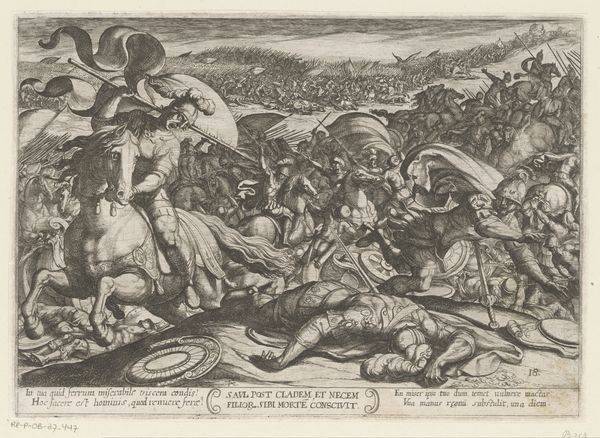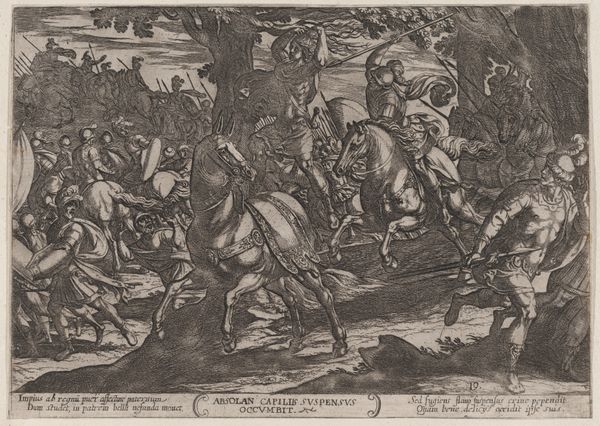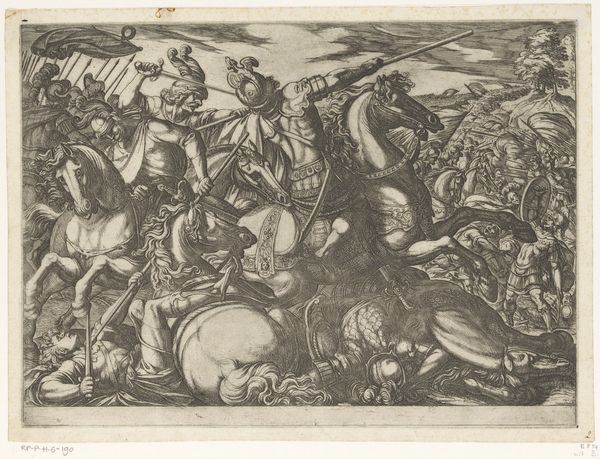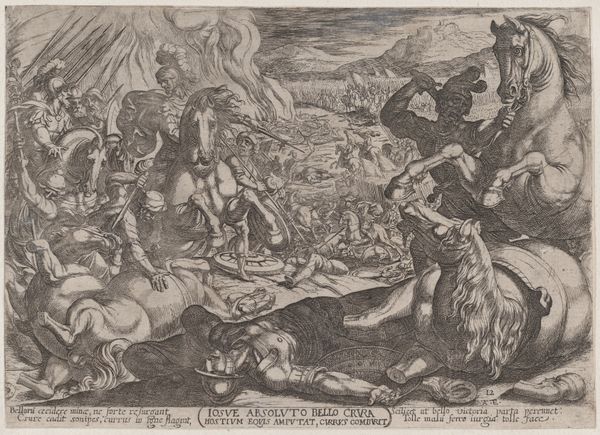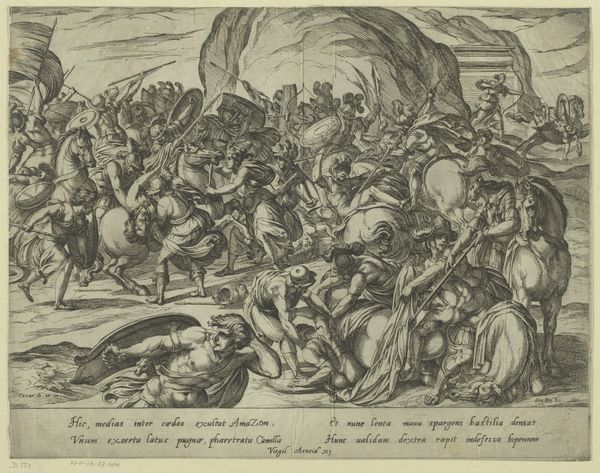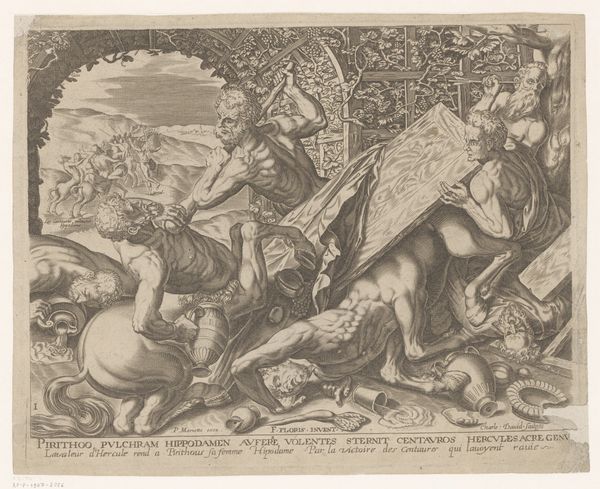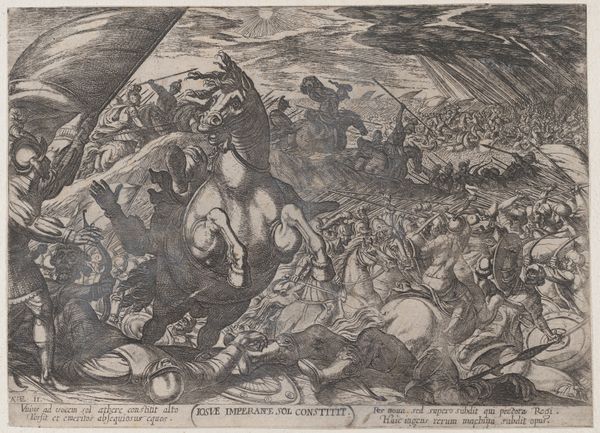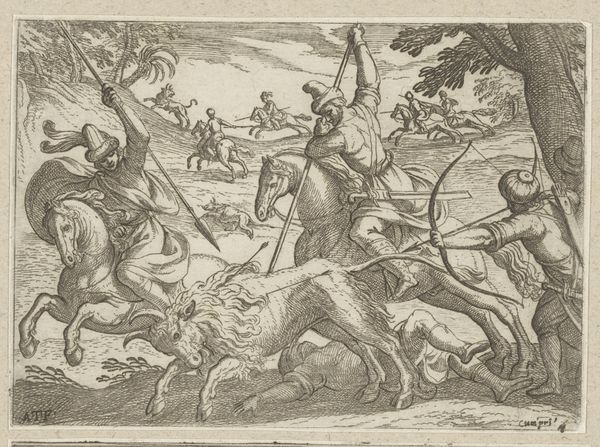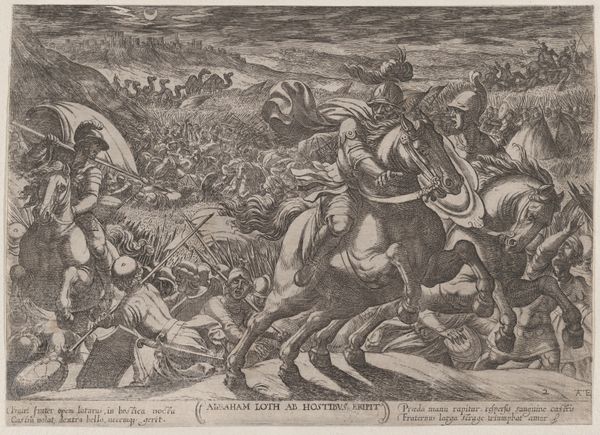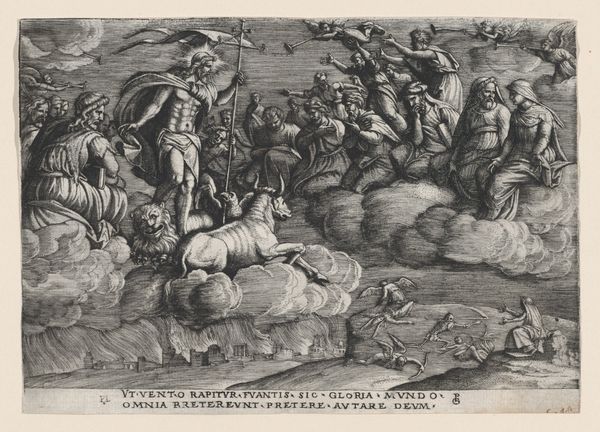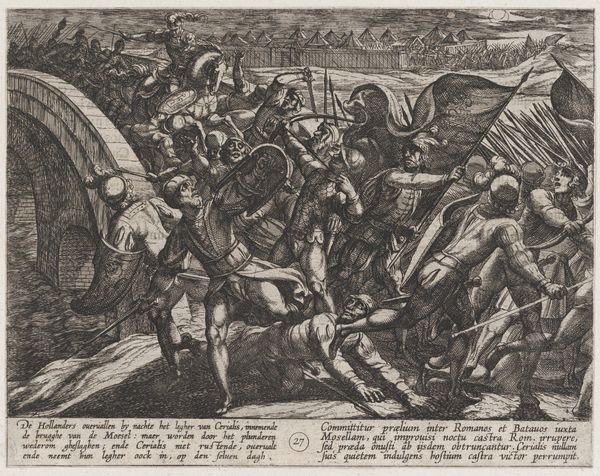
Plate 18: Saul's Suicide after His Defeat by the Philistines, from 'The Battles of the Old Testament' 1585 - 1615
0:00
0:00
drawing, print, etching, engraving
#
drawing
#
medieval
#
narrative-art
#
pen drawing
# print
#
etching
#
death
#
landscape
#
mannerism
#
figuration
#
soldier
#
horse
#
history-painting
#
engraving
Dimensions: Sheet: 7 15/16 in. × 11 in. (20.1 × 28 cm)
Copyright: Public Domain
Curator: This is “Plate 18: Saul's Suicide after His Defeat by the Philistines, from 'The Battles of the Old Testament',” an etching, engraving and print by Antonio Tempesta dating from 1585 to 1615. Editor: Wow, a flurry of motion, all those tiny, frenetic lines. It feels almost violently restless, doesn’t it? Like looking into a hornet’s nest stirred up. Curator: The etching really lends itself to that feeling. Tempesta could create such a densely populated scene with so much energy. The line work is really put to use here. Look how he builds up areas of dark shadow against light with all the lines being so close to one another. Editor: It does, although what interests me most is how this piece plays with scale. I'm drawn to how these swarming figures are rendered almost identically, as if a heroic battle is just a form of laborious, repetitive work done in vast quantity. Curator: I find it interesting how the artist renders death and defeat in this work. It feels... operatic. He has all these figures falling dramatically but the way he shows them just seems... well... like a story playing out more than something truly visceral. Editor: It's definitely stylized. The way those bodies are strewn, almost elegantly, amongst the chaos…almost decorative in a way. And you think about how this print would be reproduced, disseminated, consumed almost like battlefield reportage of its day. Each impression made with labor, then further feeding this visual depiction of violence to a wide audience through early mechanical reproduction. Curator: Thinking about it from that angle makes you wonder if people then even questioned its artistry so much as considered the news it brought. As for Tempesta himself, though he was clearly very skilled in all of this media, his primary intention was surely less about commenting on the production process than on portraying something that was historically important. I could be wrong! But I’d hazard a guess. Editor: I find considering those multiple functions within one object – both the artistic creation, plus the means of production that facilitates the artwork’s consumption and wider accessibility – much more interesting. A lot of complex things happening, materially. Curator: It’s funny how different lenses create such diverse interpretations of this one depiction. I guess the real magic trick is Tempesta having made it resonate so many centuries later! Editor: Indeed. All this fussing over labor, artistry and distribution for one tiny, yet captivating etching. Food for thought.
Comments
No comments
Be the first to comment and join the conversation on the ultimate creative platform.
